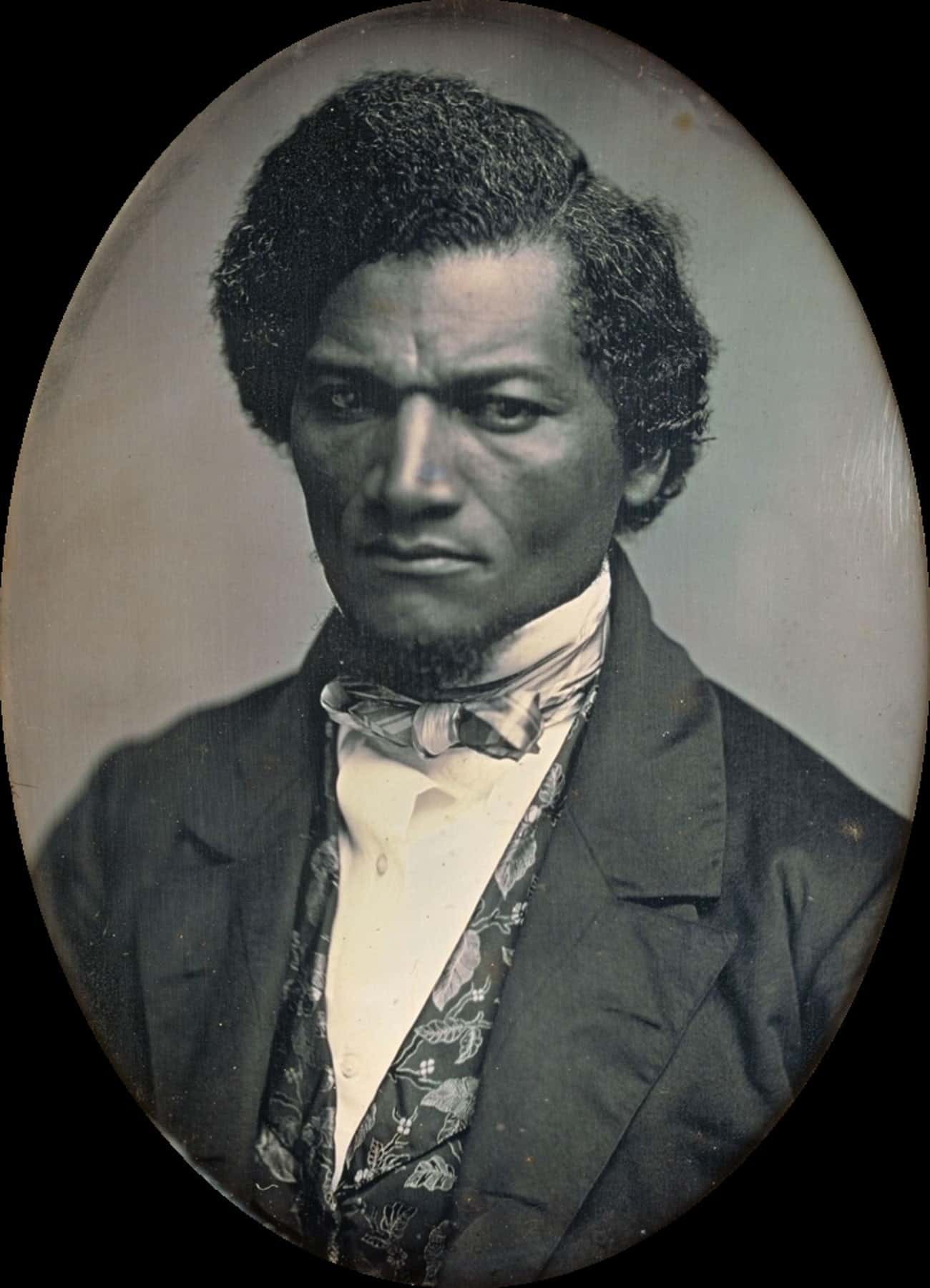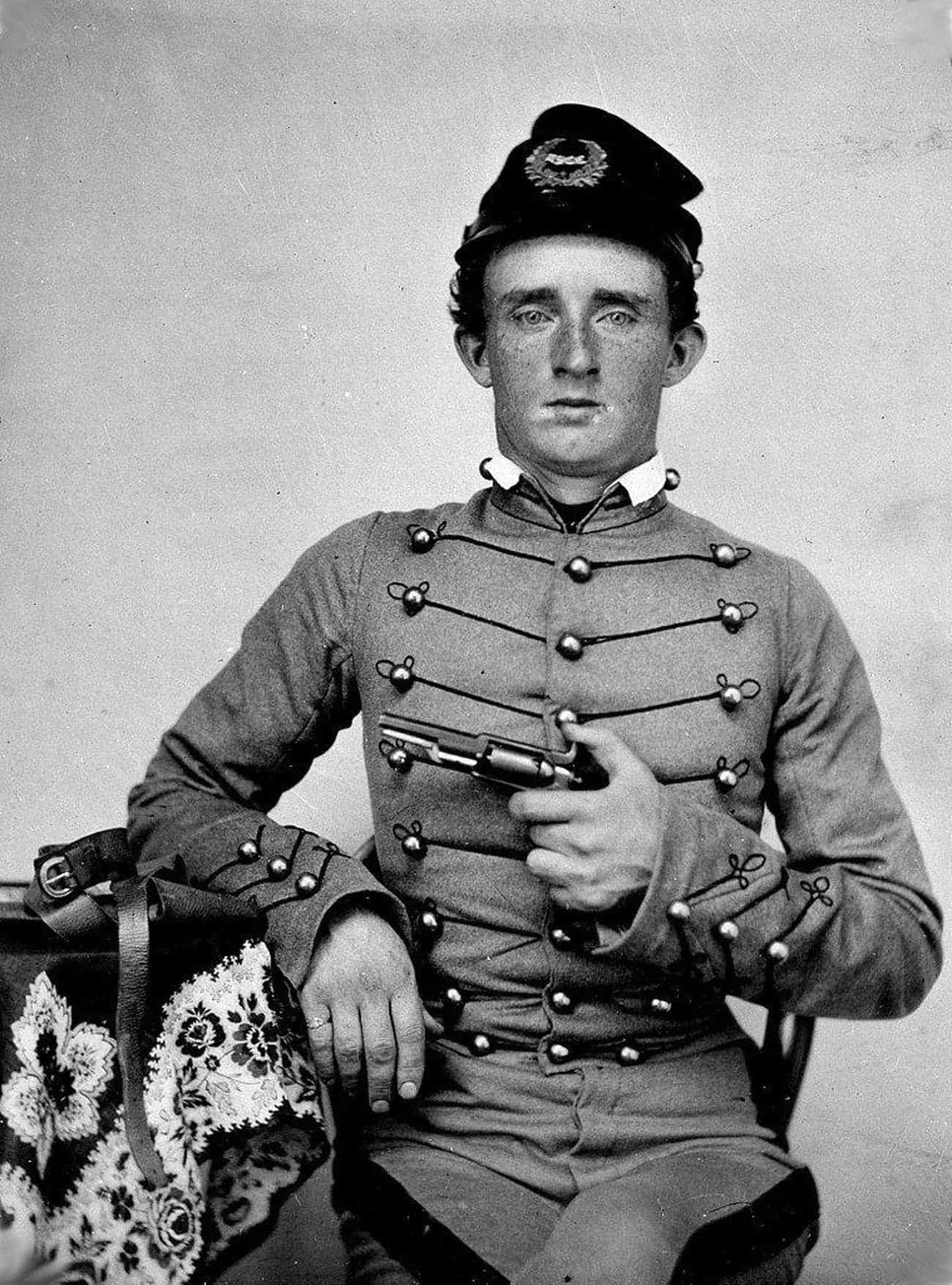Frederick Douglass (c. 1847-1852)
This abolitionist escaped slavers in Maryland and went on to be an important social reformer of his era. You are looking at a daguerreotype produced by Samuel J. Miller anywhere from 1847 to 1852. This was what the Art Institute of Chicago had to say: “Northeastern Ohio was a center of abolitionism prior to the Civil War, and Douglass knew that this picture, one of an astonishing number that he commissioned or posed for, would be seen by ardent supporters of his campaign to end slavery. Douglass was an intelligent manager of his public image and likely guided Miller in projecting his intensity and sheer force of character. As a result, this portrait demonstrates that Douglass truly appeared “majestic in his wrath,” as the nineteenth-century feminist Elizabeth Cady Stanton observed.”

Frederick Douglass (c. 1847 1852)
George Armstrong Custer At West Point (1859)
The image below was taken before George Armstrong Custer grew out his mustache and curly hair! He had been a cadet at West Point at the time. Even though he was at the bottom of his graduating class, he became famous as a cavalry officer during the Civil War. He has been described as an “Indian fighter” with a “theatrical presence and sensibility.” In 1864, he oversaw the Sand Creek Massacre and earned criticism for his tactics. It was mostly fought against children, women, and the elderly! These days, he is best known for his defeat at the 1876 Battle of the Little Big Horn.

George Armstrong Custer At West Point (1859)


